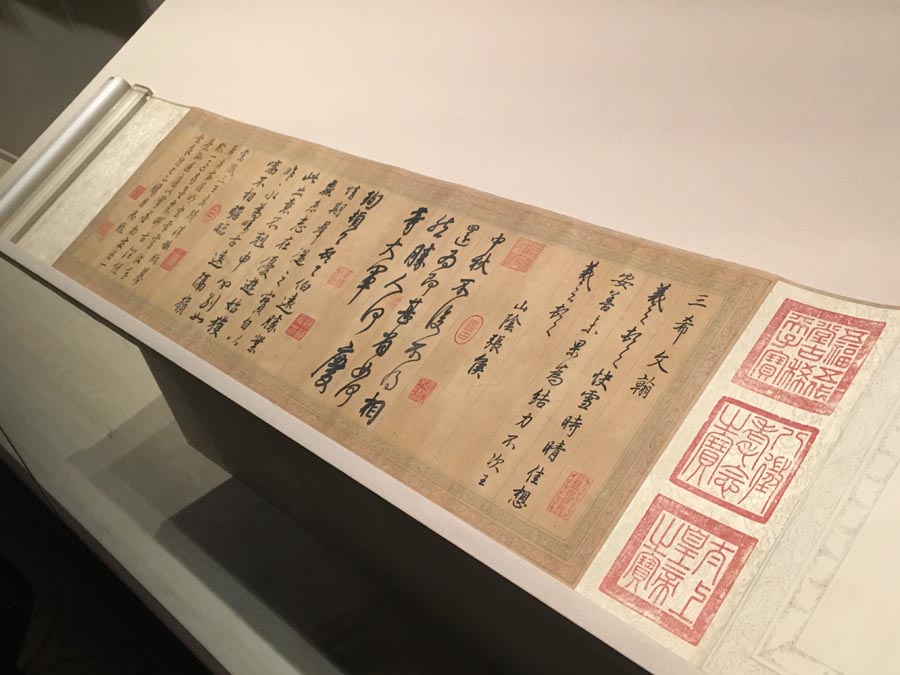 |
|
Qianlong's handwritten copy of three calligraphy masterpieces from the Eastern Jin Dynasty that he had collected. [PHOTO BY WANG KAIHAO/CHINA DAILY] |
The "three rarities", all dating back to the Eastern Jin Dynasty (317-420), are fine art icon Wang Xizhi's Clearing After Snowfall, his son Wang Xianzhi's Mid-Autumn Festival and Wang Xun's Letter to Boyuan. Due to their age and the fragility of paper-based artworks, the trio are generally considered among the most precious remnants in the history of Chinese calligraphy.
One of the works on display, Dong Bangda's landscape Memories of the Hall of the Three Rarities, places Wang Xizhi at the center of the image as if to depict the emperor reimagining his idol, according to a long paragraph of emotional comments Qianlong left on one corner of the painting.
Zhao says the emperor created dozens of reproductions of the "three rarities", according to records in the Stone Moat, and one of these works appears in the exhibition.
"Through this, Qianlong is showing his devotion to the origins of traditional Chinese calligraphy," she says.
Following his edict, Qianlong's courtiers produced Model Books of Calligraphy From the Hall of Three Rarities, which features more than 300 reproductions of the most important works of calligraphy from Chinese history.
"This represents a major contribution to the inheritance of ancient Chinese art," Zhao says.